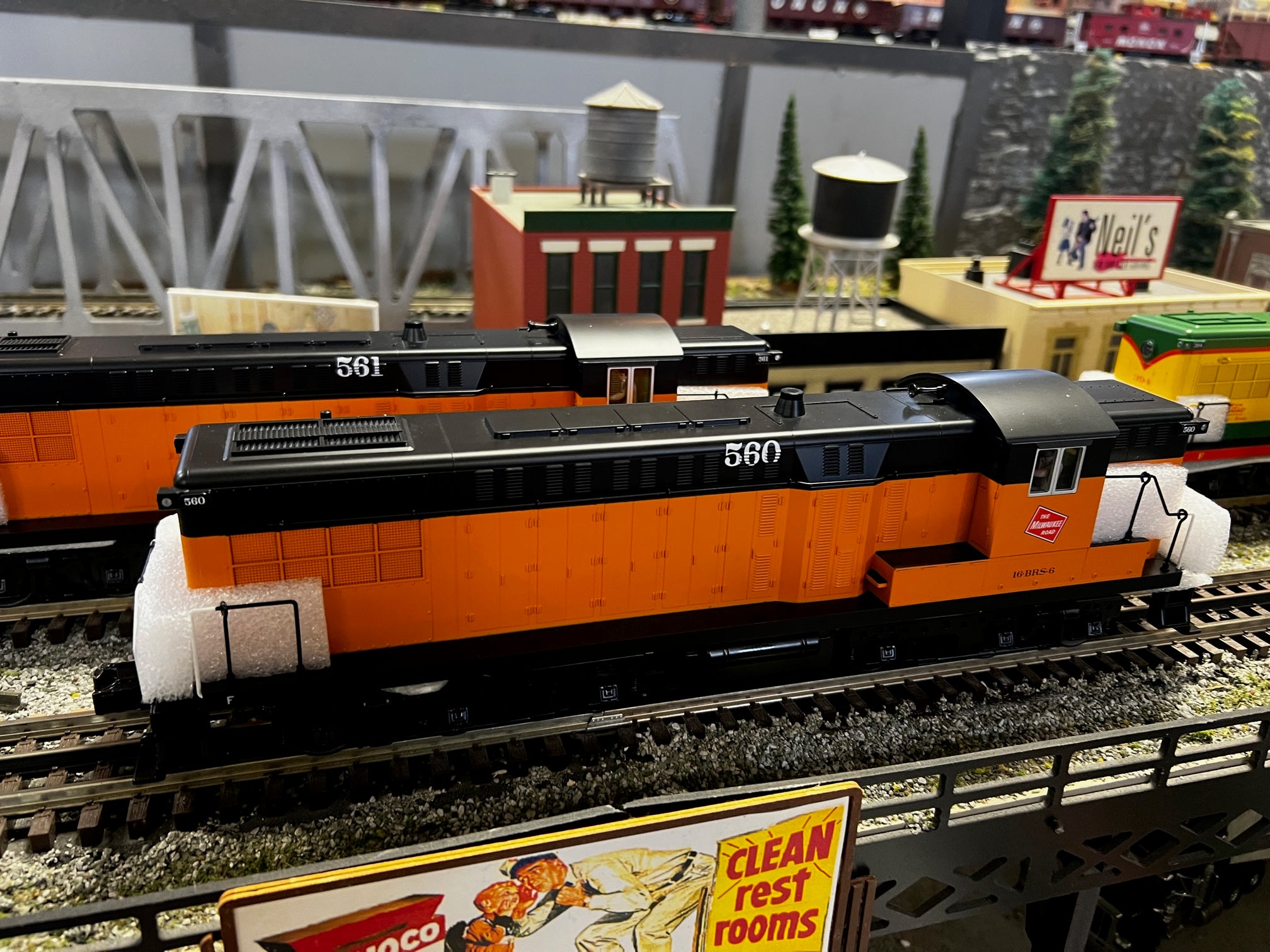Love it? Add to your wishlist
Your favorites, all in one place. Shop quickly and easily with the wishlist feature!
[message]
[title]
[message]



Announcement Date:
Guaranteed Pre-Order Due Date:
Expected Delivery Date:
Individually Boxed:
| Announced Date: | July 2021 |
| Released Date: | Jan 2023 |
| Individually Boxed: | Yes |
Formerly 30-208MILW
Diesel DCC Features
Built from 1950-1954, the AS-616 was Baldwin's best-selling and final stab at the burgeoning road switcher market, which had been pioneered by Alco's RS-1 and came to be dominated by EMD's GP7 and GP9. In theory - and in practice with EMD Geeps - a road switcher was the perfect all-around diesel, equally adept at low-speed yard work or hustling mainline freight. And indeed, AS-616 stood for "All-Service, 6 axle, 1600 horsepower" But the AS-616, like all Baldwin diesels, became typecast by its owners in one particular role: low-speed lugging of heavy loads, both in the yard and in mainline drag freight service.
This role stemmed from the De La Vergne diesel motors that powered all Baldwin units. Acquired by Baldwin in 1931, the De La Vergne Engine Company had started life in 1880 making mechanical refrigeration machines for breweries. Its power plant for Baldwin's locomotives was unique among diesels of its time. In order to make the fuel burn slower and give their 4-cycle engine a longer power stroke, De La Vergne's designers used massive cylinders more than a foot in diameter and added a separate combustion chamber above each cylinder. To allow the fuel more time to burn, they ran the engine at a maximum speed of 625 rpm - just over half the speed of most competitive diesels. In the October 1936 issue of Baldwin Locomotives Magazine, the company claimed that "slow combustion gives low fuel consumption, absence of smoke, quick pick-up, and smooth idling."
Ultimately the massive De La Vergne motor proved to be both a blessing and a curse. Teamed up with equally heavy-duty traction motors supplied by Westinghouse, Baldwin's prime mover found its niche in low-speed, heavy tonnage lugging assignments, where engine crews admired Baldwin diesels because they just wouldn't quit. But those were just the types of assignments in which crews tended to abuse equipment and push an engine to its limits. As a result, Baldwin engines eventually developed a reputation for high maintenance costs. The early VO-1000 switcher, with its normally aspirated 8-cylinder engine, was one of Baldwin's most dependable locomotives; but the turbocharged models that succeeded it, including the AS-616, were plagued by problems that included excessive piston wear and chronic oil leaks. In the early 1950s, when diesel power was new and railroads were trying engines from all manufacturers, 19 U.S. and Latin American railroads purchased 221 AS-616s (including 7 cabless B-units). But by the middle of the decade, it was clear that Baldwin was no longer a contender in the diesel business, and in 1956 the nation's oldest locomotive builder threw in the towel.
Relive the excitement and variety of the early diesel years with the RailKing Scale AS-616. Thanks to Proto-Sound 3.0, our model features authentic Baldwin prime mover sounds and the ability to duplicate the low-speed lugging power of its prototype - as well as the ability to hustle along virtually as fast as you care to run it.
177 W Main St
Atlanta, IN 46031
765-292-2022
support@mrmuffinstrains.com
Sign up for our newsletter and be the first to know about coupons and special promotions.
© 2025, MrMuffin'sTrains Powered by Shopify
